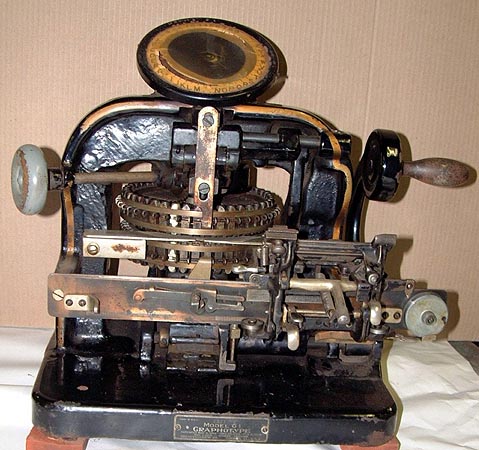Contents
For example, many municipal governments enforce policies that limit raises in rental prices, in order to keep housing more affordable. This means that landlords are unable to raise rents when housing is in short supply. Because of these restrictions, developers are less likely to fund new developments, because their profits will be limited by existing rent controls. As a result, the supply of housing is less likely to increase in those cities, even when there is a shortage.
If a product that is considered a necessity is too expensive, people will complain and legislators might set a maximum price for the product in order to keep it affordable. The price ceiling is the maximum price, or high point set by the government for a product. Similarly, the price floor is a set price that the product cannot go lower than. However, after the change in demand, the quantity demanded rises to 19,000, resulting in a shortage.
Figure 3.22 illustrates the effects of a government program that assures a price above the equilibrium by focusing on the market for wheat in Europe. In the absence of government intervention, the price would adjust so that the quantity supplied would equal the quantity demanded at the equilibrium point E0, with price P0 and quantity Q0. However, policies to keep prices high for farmers keeps the price above what would have been the market equilibrium level—the price Pf shown by the dashed horizontal line in the diagram. The result is a quantity supplied in excess of the quantity demanded .

While worth ceilings may appear to be an clearly good thing for shoppers, additionally they carry disadvantages. Certainly, prices go down in the brief term, which can stimulate demand. A price ceiling is a type of price control, usually government-mandated, that sets the maximum amount a seller can charge for a good or service. Price ceilings are typically imposed on consumer staples, like food, gas, or medicine, often after a crisis or particular event sends costs skyrocketing. A price ceiling is the mandated maximum amount a seller is allowed to charge for a product or service.
Price Floors and Ceilings
Current occupants may be reluctant to leave their dwellings because finding other apartments will be difficult. As apartments do become available, there will be a line of potential renters waiting to fill them, any of whom is willing to pay the controlled price of PC or more. Price Floors takes place when the prices set by the government exceed equilibrium prices as such determination do not give any effect market even if they set less than clearing prices of the market. Just as some places have rent ceilings to help the poor, many more have wage floors to help them.
- This restriction reduces the output that is being produced by the farmers and this further reduces the market supply and the market price level of coriander rises.
- Farm legislation passed during the Great Depression has been modified many times, but the federal government has continued its direct involvement in agricultural markets.
- However, a price floor set at Pf holds the price above E0 and prevents it from falling.
- I know I told you to ignore it, but do you at least remember where to find it?
- These are types of price control put into place by the government.
- Individual farmers whose farm incomes exceed $750,000 (or $1.5 million for couples) would be ineligible for some subsidy programs.
Although price ceilings are intended to ensure access to the most essential goods, they may sometimes have the counterintuitive effect of making those goods less accessible. This is because https://1investing.in/ the government-enforced price does not reflect the market forces of supply and demand. They every have reasons for using them, but there are massive effectivity losses with both of them.
Price Ceiling Types, Effects, and Implementation in Economics
Also, when suppliers anticipate a high price for a specific product in the future, they tend to hold more of the present product, leading to a reduced supply. It refers to the amount of products that a manufacturer is willing to produce and sell at within a specific instance and at a specific price. Rent ceiling is the maximum price a landlord is allowed to charge for rent. It is usually set by law and limits how high the rent can go in an area. Caps on the costs of prescription drugs and lab tests are another example of a common price ceiling. In addition, insurance companies often set caps on the amount they’ll reimburse a doctor for a procedure, treatment, or office visit.
According to one estimate, the U.S. government spent nearly $42 billion to support corn between 1995 and 2004. Controlling apartment rents at PC creates a shortage of (A2 − A1) apartments. For A1 apartments, consumers are willing and able to pay PB, which leads to various “backdoor” payments to apartment owners. Government enforce price floor to oblige consumer to pay certain minimum amount to the producers. When there is extreme shortage in the market, government begins rationing distribution to restrict the demand of the consumers.

To prevent price from falling, the government buys the surplus of (W2 – W1) bushels of wheat, so that only W1 bushels are actually available to private consumers for purchase on the market. The government can store the surpluses or find special uses for them. For example, surpluses generated in the United States have been shipped to developing countries as grants-in-aid or distributed to local school lunch programs. As a variation on this program, the government can require farmers who want to participate in the price support program to reduce acreage in order to limit the size of the surpluses. Price ceilings and price floors are both types of price control put in place by the government. Price ceilings do not simply benefit renters at the expense of landlords.
In the 1970s, the U.S. government imposed price ceilings on gasoline after some sharp rises in oil prices. The regulated prices seemed to function as a disincentive to domestic oil companies to step up production, as was needed to counter interruptions in oil supply from the Middle East. When they do, demand can skyrocket, leading to shortages in supply. Also, if the prices producers are allowed to charge are too out of line with their production costs and business expenses, something will have to give.
Price Ceiling Shortage
The most common example of a price floor is the setting of minimum daily wages of a labour worker, where the minimum price that can be paid to labour is established. A price ceiling can be defined as the price that has been set by the government below the equilibrium price and cannot be soared up above that. The reduction in the number of goods sold is a loss for some producers. On the other hand, the higher price charged for the goods that are sold is a benefit. This benefit is reflected in the portion of surplus that is reallocated from the consumers to the producers. A price floor that is set above the equilibrium price is called a binding price floor.
If the floor is above the equilibrium price and substitute other similar less expensive goods for them. For suppliers, goods subject to price floors would encourage them to channel materials into the production of such goods especially if the price floor is higher than the equilibrium price. But then again, then again they may not be able to sell all they produce. Price Ceilings are most prices set by the government for specific goods and companies that they imagine are being sold at too high of a price and thus shoppers want some assist purchasing them. Price ceilings only become a problem when they’re set under the market equilibrium worth.

If, for example, a crop had a market price of $3 per unit and a target price of $4 per unit, the government would give farmers a payment of $1 for each unit sold. Farmers would thus receive the market price of $3 plus a government payment of $1 per unit. For farmers to receive these payments, they had to agree to remove acres from production and to comply with certain conservation provisions. These restrictions sought to reduce the size of the surplus generated by the target price, which acted as a kind of price floor. With a price floor, the government forbids a price below the minimum. If minimum wage is set below the market price, no effect is seen.
What is Price Floors?
The excess supply created with a price floor represents the deadweight loss. For price ceilings, the deadweight loss is the loss of income from not being able to sell at the equilibrium price. While a price floor imposes a minimum price on the purchase and sale of a good, a price ceiling does the exact opposite. For a price ceiling price floor and price ceiling to be binding, it must be below the equilibrium price rather than above it. Price ceilings are typically implemented to keep prices low for the benefit of consumers. These regulations increase demand and reduce supply resulting in a shortage of goods, and they tend to benefit the demand side of the market more than the supply side.
Price floors on products such as tobacco and alcohol are aimed at reducing demand for products considered harmful to consumers. A price floor that is set below the equilibrium price is called a non-binding price floor. A non-binding price floor has no effect in a competitive market, because the equilibrium price already exceeds the price floor. In the non-binding case, market participants will continue to buy and sell at the equilibrium price and quantity. Have you ever wondered how different market regulations impact supply and demand?
A price ceiling on apartment rents that is set below the equilibrium rent creates a shortage of apartments equal to (A2 − A1) apartments. It is legal minimum price set by the government on particular goods and services in order to prevent producers from being paid very less price. Like price ceiling, price floor is also a measure of price control imposed by the government. But this is a control or limit on how low a price can be charged for any commodity.
Price floors on agricultural products are designed to keep production levels and prices high. This incentivizes producers to continue farming when the free market might otherwise incentivize them to turn to other occupations. It also protects farmers against unpredictable fluctuations in their yield.
Demand for agricultural goods of one country can suddenly dry up if the government of another country imposes trade restrictions against its products, and prices can fall. Such dramatic shifts in prices and quantities make incomes of farmers unstable. However, there may be rare situations where the floor price or the bottom price fixed for the product could be lesser than the equilibrium price. This usually happens when there are high expectations that the price could drop in the future due to the large supply.
